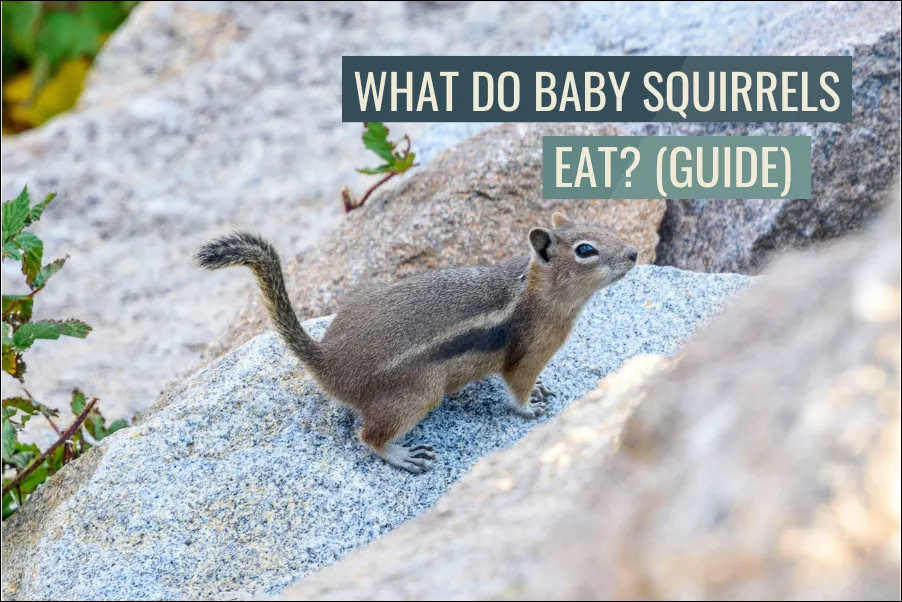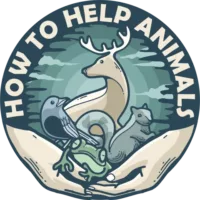
What Do Baby Squirrels Eat? (Complete Guide)
It’s early spring, and you’ve discovered a tiny, helpless squirrel that has fallen from its nest during a storm. Its eyes are barely open, and it’s making soft chittering sounds that tug at your heart. You want to help, but you’re unsure what this vulnerable creature needs to survive and grow.
Baby squirrels eat their mother’s milk for the first 8-10 weeks of life. Orphaned babies require specialized milk replacer formula, never cow’s milk or human baby formula. After weaning, they gradually transition to solid foods like nuts, seeds, and fruits over several weeks.
Newborn Baby Squirrels (0-5 Weeks)
Newborn squirrels are completely dependent on their mother’s milk during their first weeks of life. They’re born blind, deaf, and hairless, weighing only about half an ounce. During this critical period, mother’s milk provides all the nutrients, antibodies, and hydration they need for proper development.
If you find an orphaned newborn squirrel, immediate professional help is essential. Wildlife rehabilitators have access to specialized milk replacers formulated specifically for squirrels. These formulas contain the right balance of proteins, fats, and nutrients that growing squirrels require.
Emergency Care for Orphaned Baby Squirrels
Never attempt to feed cow’s milk, human baby formula, or any dairy products to baby squirrels. These can cause severe digestive problems and potentially fatal diarrhea. Similarly, avoid giving water alone, as it lacks the nutrients babies desperately need and can lead to aspiration pneumonia.
Commercial puppy milk replacer can serve as a temporary emergency measure until you can get proper squirrel formula or reach a wildlife rehabilitator. However, this should only be used for a few hours at most, as the nutritional requirements differ significantly between species.
Feeding Schedule for Baby Squirrels
Baby squirrels require frequent feeding around the clock. Newborns need feeding every 2-3 hours, including overnight. As they grow and develop, the time between feedings gradually increases to every 4-6 hours by the time they’re ready to start trying solid foods.
The amount of formula increases as the baby grows, typically starting with just a few drops and progressing to several milliliters per feeding. Professional wildlife rehabilitators use precise feeding charts based on the squirrel’s age and weight to ensure proper nutrition without overfeeding.
Transitioning to Solid Foods (5-8 Weeks)
Around 5-6 weeks of age, baby squirrels begin showing interest in solid foods while still nursing. This is when their teeth start emerging, and they become curious about what their mother eats. The transition period is gradual and crucial for developing proper eating habits.
Start introducing very soft foods like mashed banana, softened nuts, or specialized rodent pellets moistened with formula. Unlike hard foods like corn on the cob, which adult squirrels handle easily, babies need everything soft and easily digestible during this transition phase.
Safe First Foods for Young Squirrels
The first solid foods should closely mimic what wild squirrels naturally eat. Softened sunflower seeds, finely chopped nuts, and small pieces of apple or other soft fruits work well. Avoid anything hard, sticky, or difficult to chew, as baby squirrels are still learning to process solid food.
Never offer chocolate or other toxic foods to any squirrel, but this is especially critical for babies whose developing systems are even more vulnerable to toxins. Similarly, avoid processed foods like bread that provide little nutritional value and can cause digestive upset.
Foods to Avoid for Baby Squirrels
Several foods that might seem harmless can be dangerous for developing squirrels. Avoid nuts in shells until babies are old enough to crack them safely. Skip any foods high in salt, sugar, or artificial additives. Raw peanuts can contain harmful fungi, so stick to safer alternatives.
Dairy products remain off-limits even as babies transition to solid foods. Their digestive systems never develop the ability to properly process lactose, making dairy a consistent source of digestive problems throughout their lives.
Signs of Proper Development
Healthy baby squirrels show steady weight gain, increasing activity levels, and normal elimination patterns. Their eyes typically open around 4-5 weeks, and their fur develops gradually. By 8-10 weeks, they should be actively exploring, climbing, and showing natural squirrel behaviors.
Watch for signs of digestive upset, lethargy, or failure to gain weight, as these can indicate feeding problems or underlying health issues. Baby squirrels are particularly vulnerable to stress and environmental changes, which can affect their appetite and development.
Weaning Process (8-12 Weeks)
The weaning process is gradual, with babies slowly reducing their dependence on milk while increasing solid food intake. By 10-12 weeks, most squirrels are fully weaned and eating adult foods, though they may still occasionally nurse if with their mother.
During weaning, offer a variety of natural foods to help babies learn what’s safe to eat. Include different types of nuts, seeds, fruits, and vegetables. Grapes can be offered occasionally as a treat, but focus primarily on foods that will be available in their natural environment. Check out what other fruits you can give to squirrels here.
Hydration Needs
While nursing babies get most of their water from milk, newly weaned squirrels need access to fresh water. Provide shallow dishes that babies can’t fall into, and change the water daily to prevent bacterial growth.
Some young squirrels are initially hesitant to drink water, having relied on milk for hydration. You can encourage drinking by offering water in different containers or adding a few drops to their food initially.
When to Release Baby Squirrels
Baby squirrels shouldn’t be released until they’re completely self-sufficient, typically around 12-16 weeks of age. They need to demonstrate ability to find and process natural foods, build nests, and exhibit normal fear responses to potential predators.
The release process should be gradual, often starting with a soft release where squirrels can return to familiar feeding areas while learning to forage independently. This gives them the best chance of surviving in the wild while maintaining their natural instincts.
Working with Wildlife Rehabilitators
Professional wildlife rehabilitators have the experience, facilities, and legal permits necessary to care for orphaned squirrels properly. They understand the complex nutritional and behavioral needs of developing squirrels and can provide appropriate care throughout the rehabilitation process.
Contact local wildlife rehabilitation centers immediately if you find orphaned baby squirrels. Many states require special permits to care for wildlife, and improper care, even with good intentions, can harm babies or reduce their chances of successful release.
Preventing Orphaned Situations
Many baby squirrels become orphaned due to human activities like tree trimming during nesting season or pets attacking nests. Before trimming trees in spring and summer, check carefully for nests. Keep cats indoors during peak breeding seasons to reduce predation on squirrel families.
If you must remove a nest for safety reasons, contact wildlife professionals who can safely relocate squirrel families. Mother squirrels are excellent parents and will care for their babies much better than humans can, given the opportunity.
